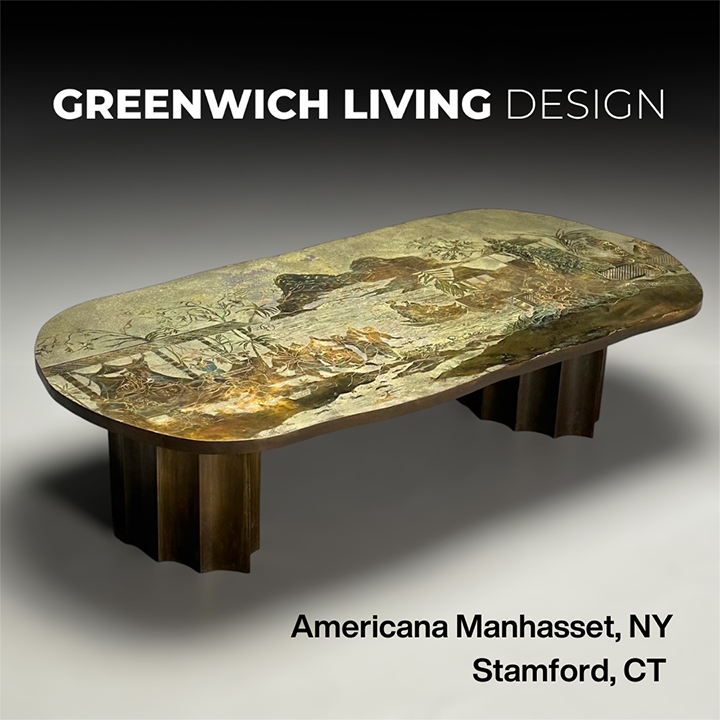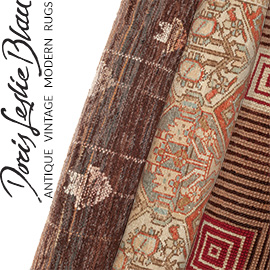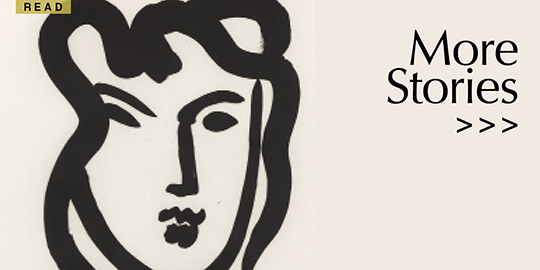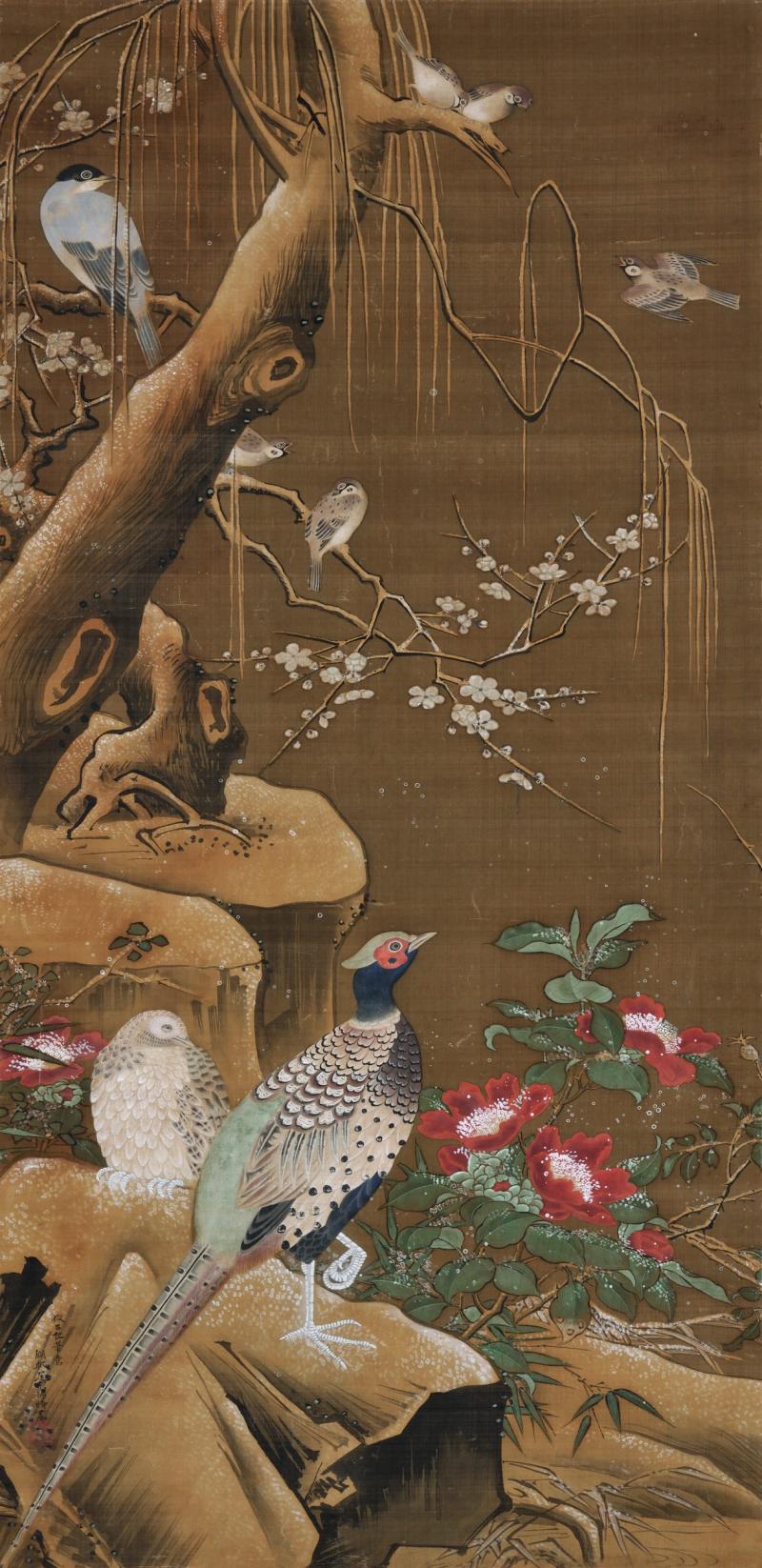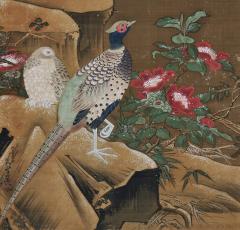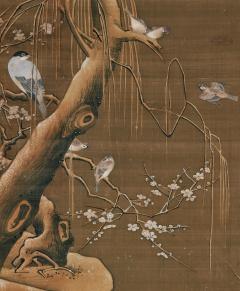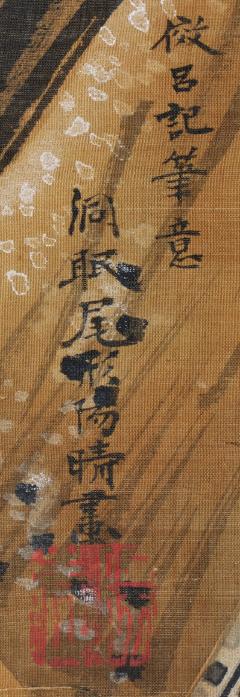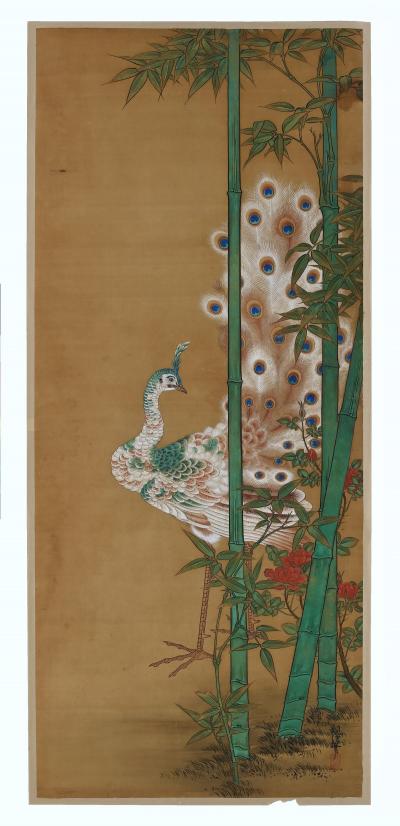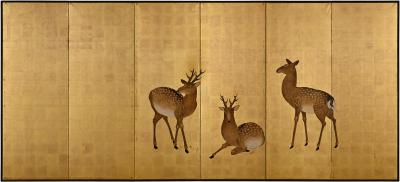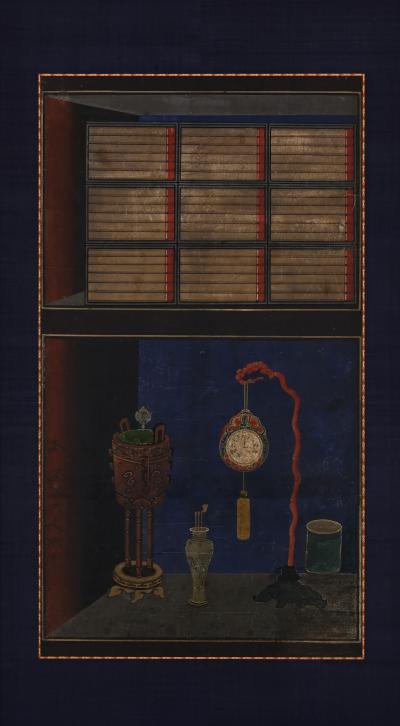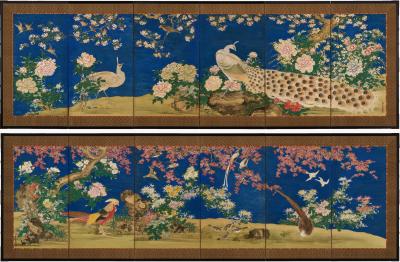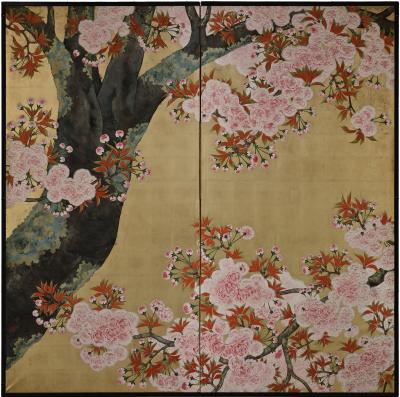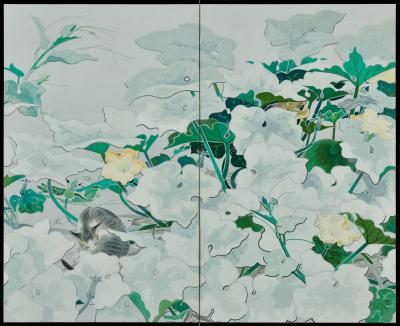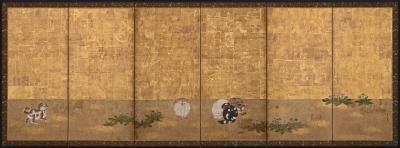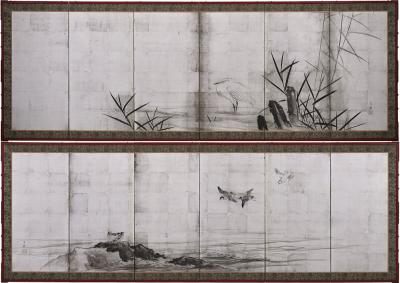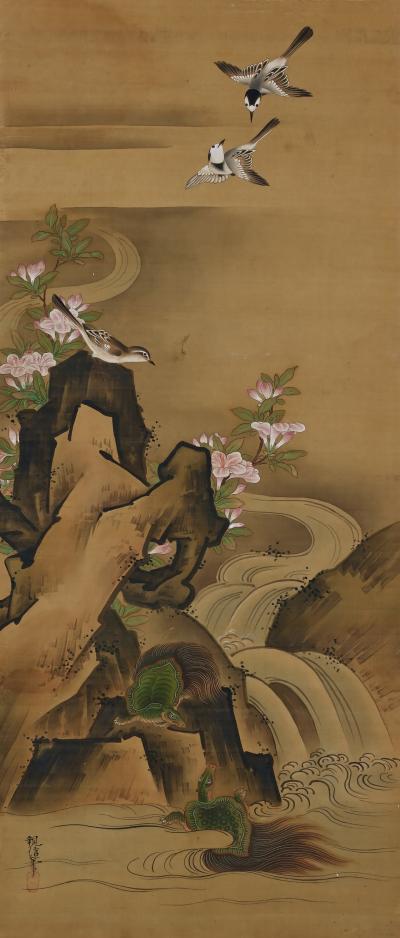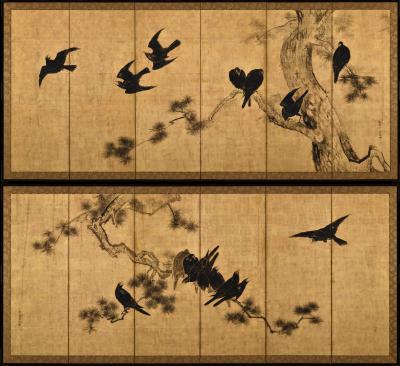Ogata Tomin (1839 -1895) 洞眠 尾形
Birds in a Spring Landscape
Unmounted painting, ink and colour on silk
Inscription reads:
“In the manner of Lu Ji, painted with heartfelt appreciation” 傚 呂紀 筆意
“Painted by Tomin Ogata Yosei” 洞眠 尾形 陽晴 画
Seal: Yosei 陽晴
Dimensions:
H. 45” x 22” (114 cm x 55 cm)
Price: USD 7,500
This is an important example of a Japanese artist expressly painting in the manner of the Chinese master Lǚ Jì. In Birds in a Spring Landscape, Ogata Tomin paints a snow covered landscape enlivened with a profusion of plum blossoms, camellias, pheasants and sparrows. Typical of works by Lu Ji the painting is well structured in design and composition; the treatment of space intricate. Sketch-like brushwork juxtaposed with fine details and brilliant colours are hallmarks of his style. This painting appears to combine compositional elements from known Lu Ji works. His ‘bird-and-flower’ paintings graced not only the imperial courts of China, but also the halls of the feudal lords of Japan, where they exercised an important influence on the development of the Kano school of painting. Tomin would have been able to access such paintings through his position in the Ogata school. Ogata school artists were in official service to the powerful Fukuoka Domain and Ogata Tomin was the 9th hereditary head of that school. Ogata artists were also closely affiliated with the high-ranking Surugadai branch of the Kano school. Despite their influence there are few such direct transmissions of Lu Ji works known, and this is a rare historical record of their appreciation in Japan.
Ogata Tomin (1839 -1895) is the first son of the painter Ogata Tanko. His given name was Moritsune and he originally studied under his grandfather Ogata Tosho. His grandfather took him to Edo (modern Tokyo) where he studied at the Surugadai Kano school. In 1866 he became the 9th generational head of the Ogata school, although the Meiji restoration of 1867 brought about the dissolution of the school soon thereafter.
Lǚ Jì (c. 1429–c. 1505) was a court academy painter of China of the early Ming dynasty (1368–1644). According to historical records, Lü Ji first studied the painting style of Bian Wenjin ( ca. 1356–1428), an important early Ming court painter of bird-and-flower subjects. Lü Ji also once had the opportunity to view and copy famous paintings of the Tang and Song dynasties at the residence of the Imperial Physiognomist, Yuan Zhongche (1376–1458), who hailed from the same hometown. At court Lü Ji further learned from the famous painter Lin Liang (ca. 1424–after 1500).




